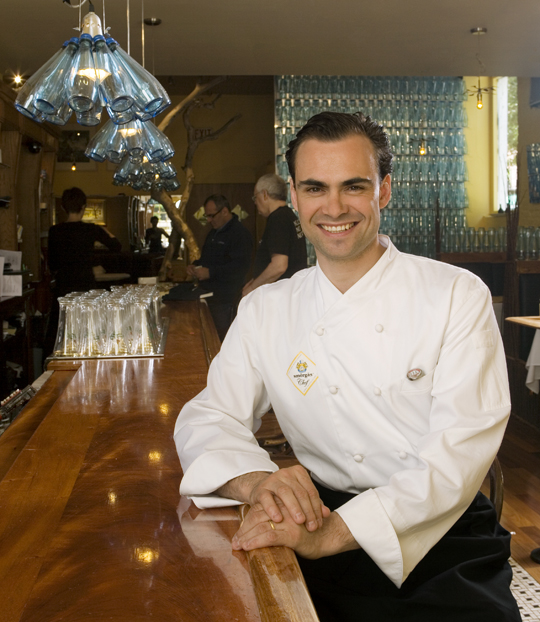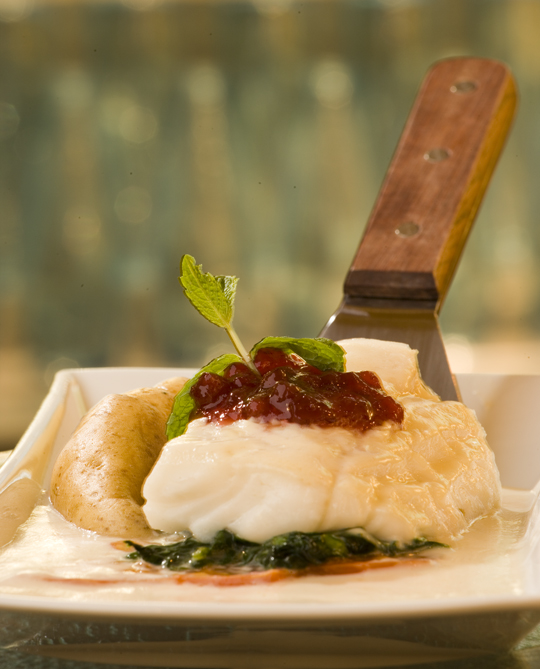Cooking Scandinavian for New Yorkers
The beer is Danish, the meatballs Swedish, the salmon Norwegian and the shrimp from Iceland. Finnish licorice is also available. It doesn’t get much more Scandinavian than this
-
 Chef Morten Sohlberg photographed by Henrik Olund at the Greenwich Village location.
Chef Morten Sohlberg photographed by Henrik Olund at the Greenwich Village location. -
-
– Smörgåschef, with three locations in Manhattan, has become one of the pan-Scandinavian meeting points in the Big Apple.
Its owner and executive chef, Norwegian Morten Sohlberg, opened the doors to the first restaurant with his wife Min Ye five years ago. The concept has been quite successful, and whether visiting Wall Street, bustling Midtown or trendy Greenwich Village, an open-faced shrimp sandwich is never far away.
Chef Sohlberg appropriately also became the new restaurateur at New York's Scandinavia House (www.scandinaviahouse.org) in the fall of 2008.
Part of the reason for their success is Sohlberg’s attention to detail. A designer by education, he takes great care in planning, designing and creating the interiors of his restaurants. With wooden floors, exposed brick walls, Scandinavian art photographs on the walls and creative details such as utensils, Ramlösa bottle lamps or a whole wall of empty Ramlösa bottles, Sohlberg has created a unique and cozy feel.
And food, just like design, is a visual art form, says Sohlberg.
“After having been a designer for many years, I knew I wanted to get into a more tactile and people-friendly business,” he says. “My wife and I wanted to open a restaurant. We looked at different locations and found the original Stone Street restaurant. After that, things simply took off.”
Scandinavian food in general might not have been the hottest ticket in town, but Sohlberg saw that as great potential.
“It’s unexplored, and even though it’s perceived as healthy, hearty and exotic, not too many people really know what Scandinavian food entails,” Sohlberg says. “It’s also not as easily definable as, say, Italian food with its pizza and pasta. Then again, of course, IKEA has done much to educate Americans about Swedish meatballs.”
Sohlberg says he wants to commercialize Scandinavian cuisine by being a positive ambassador and bringing out pure, fresh food.
“The object is not to scare people with true Scandinavian food that might not appeal to a broader audience – that doesn’t work – but we constantly try new dishes,” he says. “We have introduced a milder version of Janssons Frestelse, which is enjoyed alongside certain meat dishes.
“The task of creating a new recipe with cod and lingonberries became quite an experience. We initially tried traditional Scandinavian tastes like dill and parsley, even ventured into new ground with cilantro or watercress. We felt that the lemongrass not only brought out the flavors of the other ingredients, but complemented the sweet and tart experience of the lingonberry itself in a perfect way,” Sohlberg explains.
“It is important to never stop experimenting with new ingredients and new combinations. Good food has to feel natural and ‘right’ but should, in a restaurant, also sometimes add an experience.”
Sohlberg says he makes sure his staff is involved in coming up with new dishes. Everyone pitches in by going to the library and leafing through cookbooks. They then bring back recipes and discuss and try the findings, he says.
“I think if the waiter is happy, it will show when he serves the customer,” Sohlberg says. “Back home, the gap between the waiter and the customer is not that big, and I want to keep it like that. When my staff is happy, the customer will be happy.”
For more info on Smörgåschef, see: http://www.smorgaschef.com -
 Baked cod with lemongrass and lingonberries served with fingerling potatoes created by Sohlberg for Nordstjernan/Nordic Reach. Photo: Henrik Olund
Baked cod with lemongrass and lingonberries served with fingerling potatoes created by Sohlberg for Nordstjernan/Nordic Reach. Photo: Henrik Olund -
-
Written by Eva Stenskär
Photographed by Henrik Olund -
-
